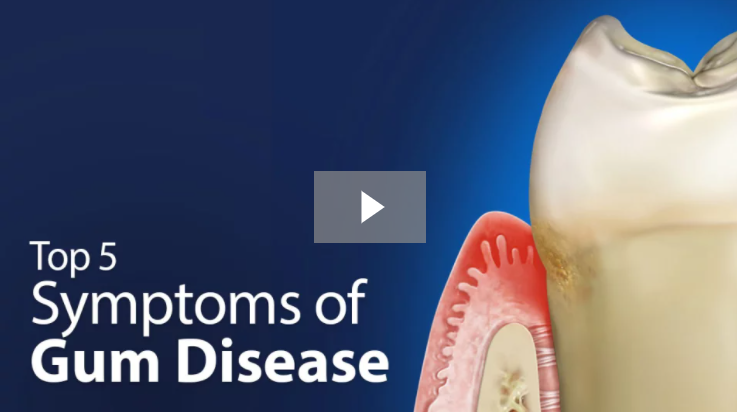Top Five Symptoms of Gum Disease

Gum disease is the infection of the gums. It begins when a plaque builds up and gradually develops along the gum line. If left untreated, the plaque hurts the bone that holds the teeth together and eats away your gum.
Gum disease can threaten your teeth. Fortunately, in its early stages, it is easily treatable. A severe form of gum disease, called periodontitis, requires an immediate dental checkup.
If you suspect that you’re suffering from gum disease, here’s what to look for;
Bad breath or bad taste
Bad breath, also called halitosis, affects 1 in 4 people globally, and it’s caused by a number of factors beyond poor oral health. However, if you keep sticky foods, tobacco, crash diets, and drugs at bay and maintain excellent oral hygiene, you shouldn’t experience bad breath. If it happens, then you must be suffering from a breathing disorder, bowel syndrome, or even a life-threatening disease such as cancer, a spike in insulin level, and liver failure.
Gum disease, in particular, creates deep pockets in the teeth, gum, or the bone holding the teeth. These pockets fill with air and odour-causing bacteria, leading to bad breath. The influx of these bacteria will also cause an imbalance of good and bad bacteria in your mouth, leading to bad taste.
If bad breath persists even after flossing or brushing, remember to mention it to your dentist during your appointment.
Tooth sensitivity or pain when chewing
A lingering pain when your teeth chew together boils down to a severe dental problem that needs immediate fixing, such as tooth decay, cracked tooth, or root canal problem. If you’ve got a filling, chances are that the filling is too high, hence causing unequal distribution of pressure whenever the teeth clamp. But, if you’ve got no filling, it’s time to check for either periodontitis or gingivitis. A plaque build-up, crack in the teeth, and worn-out enamel due to gum disease can cause a searing pain and sensitivity, especially when taking cold drinks.
Gum recession
Gum recession refers to a condition where the gum tissue wears out around the margin that holds the teeth and pulls back. With time, the teeth and their roots remain uncovered, and the gaps between the teeth become exposed to lurking dirt.
A receding gum is a progressed form of gingivitis. It results in pockets between teeth that aid the breeding of bad bacteria in the mouth or teeth falling off.
Redness & Irritation of gums
If you brush your teeth too vigorously or use a brush with hard bristles, it can lead to swollen or sore gums. However, if you are using the right brush and technique and still experiencing gum irritation and redness, it could be an indication of gum disease.
A swollen gum around the teeth that is red and irritates is a potential symptom of gingivitis and can be remedied by flossing regularly. This condition mainly results from build-up of plaque bacteria that also cause the gum to be tender. With a weekend gum, every time you crack into a nut or chew a grain, the gum irritates, swells, or becomes red.
Bleeding when you brush
A healthy gum is rigid enough to withstand the strokes of your brush, so if yours bleeds when flossing or brushing, check for gum disease.
Bottom Line
Your gum should be pink and firm to withstand the strokes of your brush without swelling, irritating, or bleeding. If you notice that your gum bulges out or protrudes, especially at the point where it meets the teeth, treat that as a red flag and seek dental check-up from our Springvale Dental Clinic.
Always remember that it is better to treat gum disease before it has progressed.
